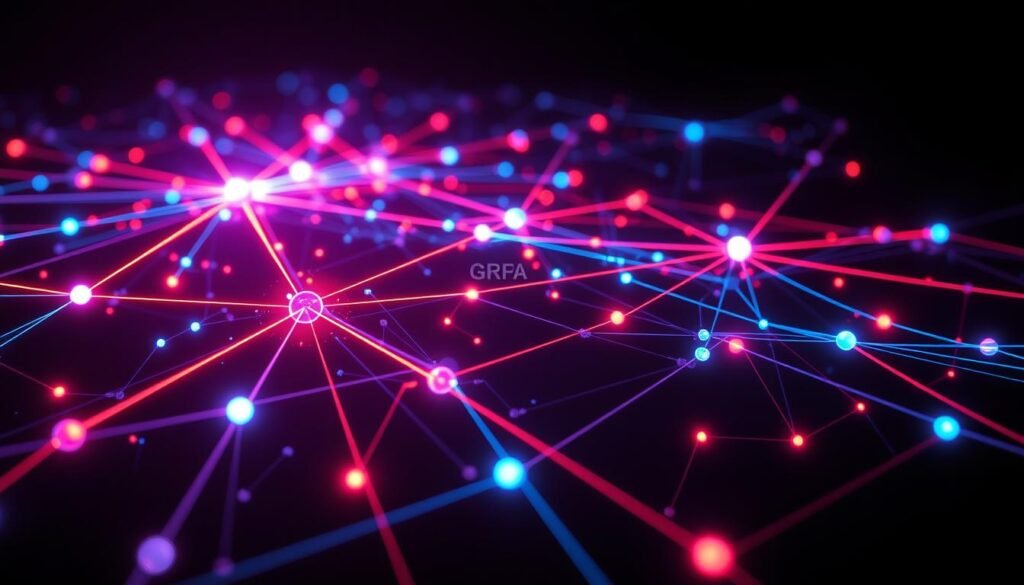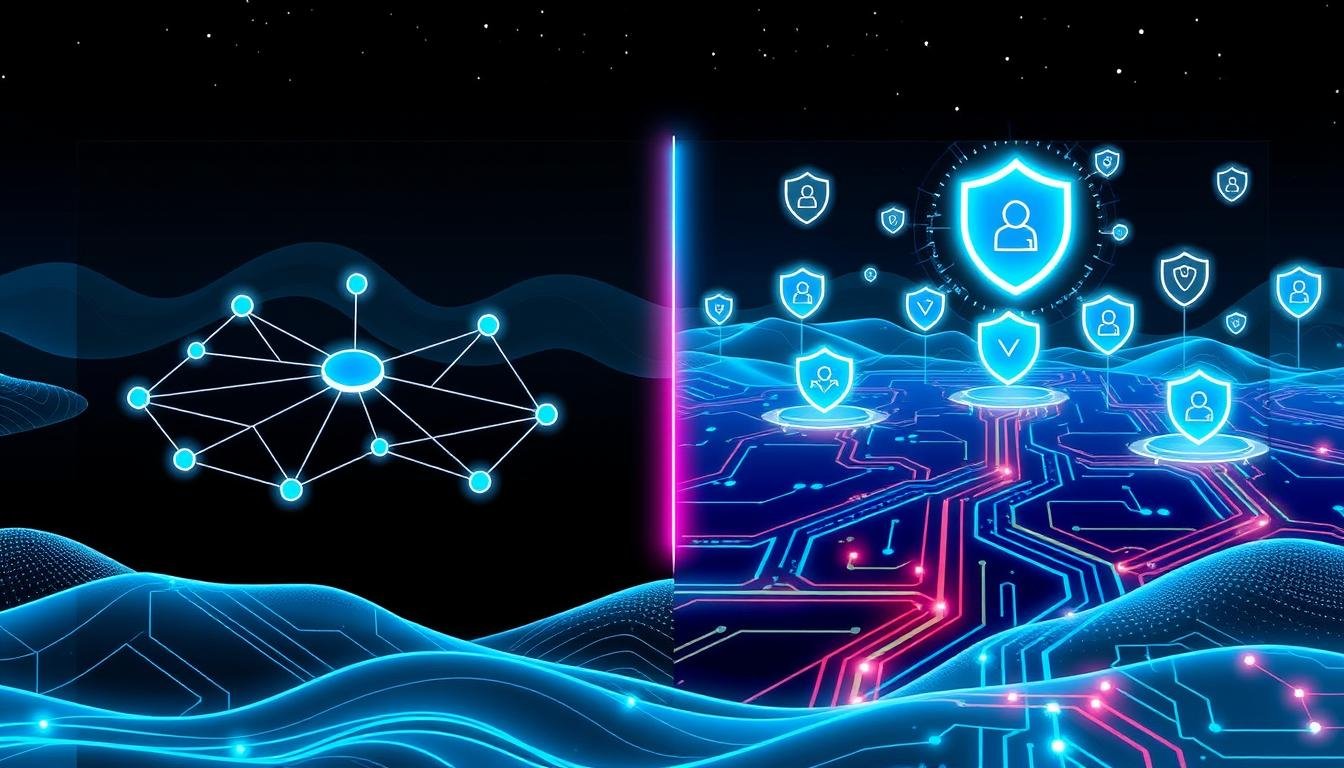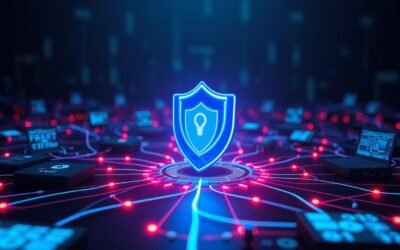Did you know over 3.5 billion people use the internet every day? This makes keeping data safe more important than ever. Understanding network protocols like VPNs and GRE (Generic Routing Encapsulation) is crucial for better network security. This article will answer the question: is GRE count as VPN? We’ll explore how GRE and VPNs work and their roles in today’s digital world to help enhance your network safety and understanding.
Key Takeaways
- GRE tunnels support various network layer protocols, enhancing flexibility.
- It enables the transmission of multicast and broadcast traffic, essential for applications like video conferencing.
- Experts recommend combining GRE with security protocols like IPsec for improved security.
- Packet fragmentation can occur in GRE tunnels, leading to potential network inefficiency.
- Configuring GRE for VPN routing involves specific settings for multiple endpoints.
Table of Contents
Understanding VPN and GRE Protocols
In today’s world, knowing about network security is key. This is especially true for safe information sharing. Let’s explore the virtual private network and the GRE protocol. We’ll look at what they do and why they’re important.
The Basics of VPN
A virtual private network (VPN) helps users safely connect to remote networks over the internet. It uses tunnel technologies to keep data safe. This makes it a cost-effective choice compared to old WAN setups.
Internet access is needed for VPN connections. This helps with remote work and keeps data safe. Encryption methods like IPSec and SSL protect data during transmission.
What is GRE?
The GRE protocol is a tunneling method that wraps Layer 3 network protocols in an IP tunnel. This lets different networks talk to each other. It’s great for making point-to-point connections.
GRE tunnels don’t keep track of the receiving router. They’re stateless. Data packets have two IP headers: the original and the GRE header. GRE doesn’t encrypt data but supports features like multicast traffic forwarding.
Is GRE Count as VPN?
To figure out if GRE is like a VPN, we need to know how they work. Both help with network communication but in different ways. GRE makes direct connections for data, while VPNs encrypt data over public networks.
Defining the Key Differences
When we ask, “is GRE like a VPN,” we see big differences. GRE mainly makes direct paths for data without encryption. VPNs, on the other hand, encrypt data for safe internet use.
VPNs use protocols like IPsec and SSL/TLS for security. GRE is simpler, used for basic secure data transport. GRE can handle various traffic but lacks the security of VPNs.
Many companies choose VPNs for their strong encryption. For example, AES with 256-bit encryption keeps data safe. Knowing these differences shows GRE is not as secure as VPNs for all needs.
What is GRE Tunneling?
GRE tunneling is a key method in computer networking. It lets different network protocols work together over IP networks. This helps systems talk to each other even if they use different protocols. Knowing how GRE works shows its importance in today’s networks.
How GRE Works in Data Transmission
The GRE protocol wraps data in a new packet for easy sharing between networks. It adds a GRE header to the original packet. This header tells the network how to route the data.
Benefits of GRE Tunneling
GRE tunneling offers many benefits for businesses. Here are some:
- Protocol Flexibility: GRE can handle many network protocols, making systems work better together.
- Easier Multicast Traffic Handling: It helps manage multicast traffic, key for group communication.
- Cost-Effective Integration: It fits well into current networks, saving money and growing with the business.
- Enhanced Network Performance: GRE cuts down on network jams, making everything run smoother.
Using GRE tunneling connects different parts of a network. It also builds strong VPNs over WANs. This makes GRE a great tool for businesses to get the most from their networks.
| Aspect | Details |
|---|---|
| Encapsulation | Wraps packets from various protocols into a single packet for transmission |
| Flexibility | Supports multiple OSI Layer 3 protocols |
| Cost-Effectiveness | Integrates with existing network setups without heavy investment |
| Multicast Support | Improves efficiency in multicast traffic routing |
| Network Performance | Reduces congestion through efficient routing methods |
How VPNs Operate
Understanding VPNs is key to knowing their role in keeping data safe. They make secure connections online, keeping your info private and safe from hackers. At the heart of many VPNs is IPsec, a set of protocols that secure internet communications.
IPsec makes sure your data is both private and safe. It does this by encrypting and checking each data packet. This keeps your information safe and sound.
The Role of IPsec in VPNs
IPsec is crucial for a secure VPN connection. It works in two ways: transport mode and tunnel mode. Transport mode only encrypts the data part of the packet, keeping the header safe.
Tunnel mode, however, encrypts the whole packet. It wraps the data in a new packet. This is great for remote users connecting to a private network.
IPsec makes sure your data stays private on public networks. It helps set up secure connections by checking who is sending and receiving data.
Encryption Methods Used in VPNs
VPNs use different encryption methods to keep data safe. Some common ones are:
- IPsec – It’s good for both encrypting and checking data, making it a top choice for security.
- SSL/TLS – This is often used for websites and creates a secure tunnel for data.
- L2TP – It works with IPsec to add extra security, making networks even safer.
Each encryption method has its own level of security. For example, two-phase key negotiation is safer than single-phase. It also supports features like Perfect Forward Secrecy (PFS).
Comparing GRE and VPN
GRE and VPNs are different in what they do. VPNs protect data with strong encryption. GRE is good for moving data but not for keeping it safe.
Security Features of VPNs
VPNs have many security tools. Some of the most used are:
- OpenVPN: This open-source protocol uses AES 256-bit encryption. It’s safe on public Wi-Fi.
- IKEv2/IPsec: It’s fast and stable, especially on mobiles. It gets past firewalls and keeps connections secure.
- WireGuard: It’s one of the fastest. It’s also modern and efficient.
- SSTP: It uses AES-256 encryption. It’s good at getting past firewalls.
- L2TP/IPsec: It’s secure but can be slow. This is because it uses double encapsulation.
- PPTP: It’s fast and works with many devices. But, it’s not very secure. Firewalls might block it.
Protocol Compatibility of GRE
GRE works with many network protocols. This makes it useful in many network setups. It can even tunnel non-IP traffic.
GRE can be used with IPsec. This adds extra security for things like multicast apps. It keeps data private but still flexible.
VPNs focus on keeping data safe with encryption. GRE is great for moving different types of data. Knowing these differences helps make networks safer.
Use Cases for GRE Tunneling

GRE tunneling is key in network operations. It connects different network protocols smoothly. This makes it great for linking various protocols and improving network routing.
Connecting Different Network Protocols
GRE tunneling is vital for linking different network protocols. It’s especially useful when moving from IPv4 to IPv6. It makes communication easier by wrapping one protocol in another.
This helps a lot when different protocols don’t work well together. Also, GRE makes VPNs work over Wide Area Networks (WANs). This connects far-off sub-networks together.
Scenarios Best Suited for GRE
GRE tunneling is great in many situations:
- It helps when networks are not fully connected or are broken. It makes network routing better.
- It lets multicast traffic reach many devices at once.
- GRE connects VPN appliances or routers to Transit Gateway (TGW) easily. No need for many VPN connections.
- It makes data transfer safe over public and private networks. This is good for MPLS-based operations.
- It uses dynamic Border Gateway Protocol (BGP) for VPN tunnels. This is between different cloud services like AWS and Oracle Cloud.
In short, GRE tunneling boosts efficiency. It links network protocols and meets many network routing needs.
When to Use a VPN
Choosing the right protocol for networking needs is key. A VPN is best when you need secure remote access. This is crucial for businesses needing to connect to their networks safely.
Advantages of VPN over GRE
VPNs beat GRE in security and encryption. GRE doesn’t encrypt data, but VPNs do. This keeps your data safe from hackers.
The main benefits of VPNs are:
- Enhanced security: VPNs use strong encryption to block unauthorized access.
- Data integrity: VPNs keep your data safe from tampering.
- Access control: VPNs help control who can access your network.
Remote Access and Network Security
VPNs are vital for remote access security. More employees work from home, increasing data risk. VPNs create a secure tunnel for remote access.
Choosing between VPN and GRE depends on your needs. VPNs are better for protecting data during remote access.
| Feature | VPN | GRE |
|---|---|---|
| Encryption | Yes | No |
| Data Integrity | High | Low |
| Remote Access | Secure | Limited |
| Authentication | Strict | Basic |
Combining GRE and IPsec
In today’s complex networks, both function and security are key. GRE and IPsec together make a network more secure. GRE wraps different protocols in a package. IPsec then adds security by encrypting and authenticating IP packets.
This mix keeps data safe and lets routing protocols work well. It’s especially useful when ISPs block certain traffic between routers.
Creating a Secure Diverse Network
GRE tunnels inside IPsec keep data safe as it moves through different networks. This is great for companies with lots of sites. It keeps data safe and sound, no matter where it goes.
GRE’s flexibility and IPsec’s strong security make it perfect for growing businesses. It’s ready for changes in the network.
Examples of Integration
Real examples show how GRE and IPsec work well together. For example, big companies with many branches use GRE over IPsec. It keeps their network fast and secure.
Tools like DMVPN make it easy to connect sites securely. But, setting it up right is important to avoid slow downs. This way, networks stay flexible and safe.






0 Comments